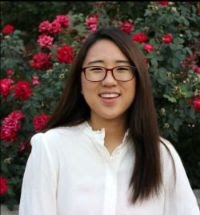Chemical Engineering/Biology scholar at Mines, Kim Kacey, writes to us:
The pandemic seemed to throw a wrench into the world’s plans, forcing me to put a hold on my work and enter an adjustment period. I found myself itching to find creative projects that would challenge me outside of my coursework and maximize the sudden increase in my available time. This desire to become safely involved in my community propelled me to create a non-profit, volunteer organization and join the US Environmental Protection Agency (EPA). The volunteer program, called Museum on the Go, was designed to provide nursing homes a way to reconnect senior citizens to their neighborhood through community engagement. My work as a co-founder involved reaching out to locals and other organizations to develop a network of senior citizens and neighborhoods for the activities.
In conjunction with developing this passion project, I had the opportunity to cultivate my scientific knowledge by joining the EPA team to study harmful chemical analytes in Native American waterways. The remote internship involved managing large data sets and collaborating with teams of different expertise to analyze the human health impacts of contaminates. By combining my expertise in technology and curiosity in human health, I had the opportunity to work beyond my given role and discover my interests in biological engineering.
Through these summer efforts to rediscover and develop new connections, I found myself effortlessly enjoying the element of contribution and my potential in my community. As labs and classrooms began to open once again during the pandemic, I joined Dr. Stephanie Kwon’s Lab of Catalysis & Applied Technology in Surface Science (LCATS) research group as I became interested in kinetics from my coursework. I was responsible for learning, mastering, and conducting most density functional theory (DFT) calculations for the team. The learning process for DFT analysis proved to be challenging due to my initial unfamiliarity with the system and demands of coursework at the time, but I was able to mitigate this difficulty by completing tasks I was confident with before focusing on others. This allowed me to effectively dedicate my time to my education, my research, and the Mines’ genetically engineering team (iGEM) while maintaining a balanced, social lifestyle.
With the opportunity to challenge myself beyond the labs and learn more about my research capabilities, I desired to further develop my studies beyond my undergraduate degree and enroll in a PhD program in the near future. I hope to use my skills and education to not only advance the health research industry but also empower others to turn problems into opportunities. Kim goes on to describe her research.
HCOOH decomposition routes on Au (Gold) catalysts
This project aims to design a catalytic system to efficiently store and release H2 molecules in form of chemical bonds in organic molecules. Specifically, formic acid (HCOOH) decomposition routes have been emerged as a promising method to release H2 on demand for fuel cell applications. More recently, previous works have demonstrated that Au nanoparticles of sub nanometer sizes (< 1nm) are very active and selective for HCOOH dehydrogenation catalysis, even at atmospheric temperature and pressure. Yet, the mechanistic details are not well-understood with conflicting mechanisms proposed in literature. This work will combine kinetic, spectroscopic, isotopic, and theoretical methods to understand HCOOH dehydrogenation mechanisms involved in sub nanometer sized Au particles. We expect that the results of this study will provide fundamental understanding of catalytic reactivity and selectivity of atomically dispersed Au catalysts, which will ultimately allow us to design reactive and selective catalytic system for HCOOH dehydrogenation processes.

